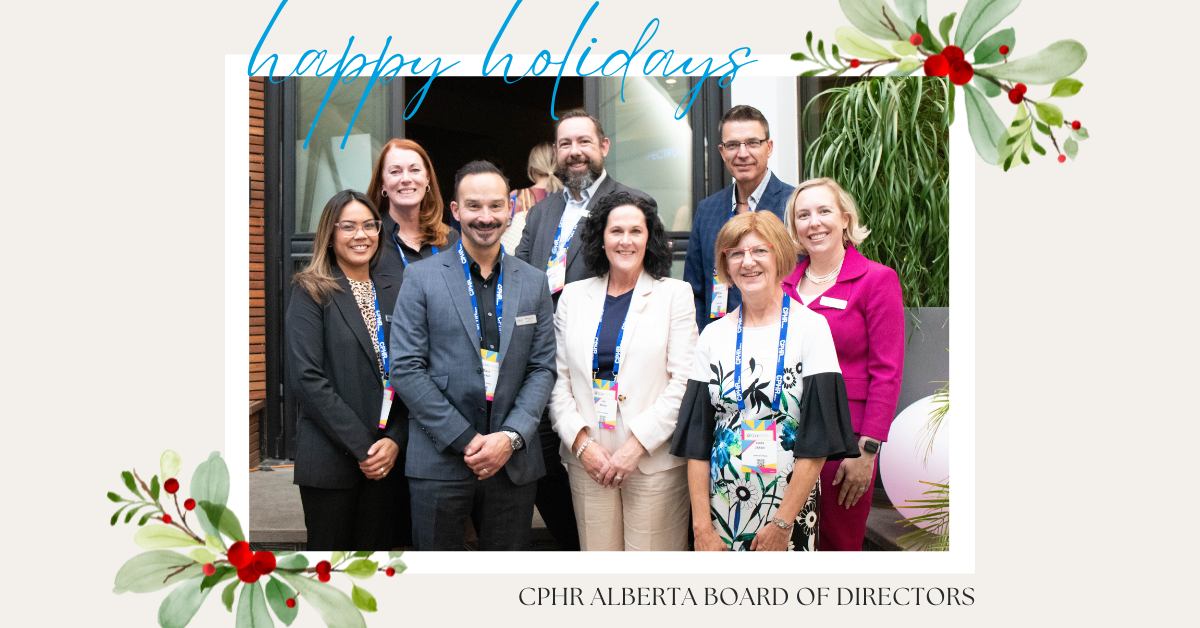
Board of Directors 2022 Special Message

Author: Lisa Watson, Chair, CPHR Alberta Board of Directors
On behalf of the Board of Directors, I would like to say thank you to the CPHR Alberta team and our member community for an incredible year.
2022 has been a year of change for both the profession and our association. We have welcomed our new Chief Executive Officer, Ioana Giurca, and we continue to make strides in the Alberta, Northwest Territories and Nunavut landscape as human resource professionals remain the constant in an ever-changing workforce.
This year we were given the opportunity to once again meet in-person with our colleagues, friends and members building connections and learning from one another.
Our Board took part in this year’s hybrid conference and had the opportunity to meet and talk with many of you. We appreciate hearing your feedback on the direction of the association and encourage you to continue sharing your voice through our surveys, town halls and AGMs to ensure we can provide the best opportunities for your growth and the growth of the profession.
Throughout 2022, our Self-Regulation Task Force has been working on our application for self-regulation, with the support of our government relations firm Global Public Affairs. We look forward to continuing to engage with Government on this important strategic priority. As a reminder, please show your support for CPHR Alberta’s application by signing our petition in favour of self-regulation.
The Board of Directors continued to push the association’s strategic priorities forward. We are passionate about the priorities and are excited to continue this work into 2023. We ended the year strong in all aspects, and look forward to what 2023 has to offer.
We wish you all the best this holiday season and look forward to connecting again in the new year.
The views and opinions expressed in this blog post belong solely to the original author(s) and do not necessarily represent the views and opinions of CPHR Alberta.





